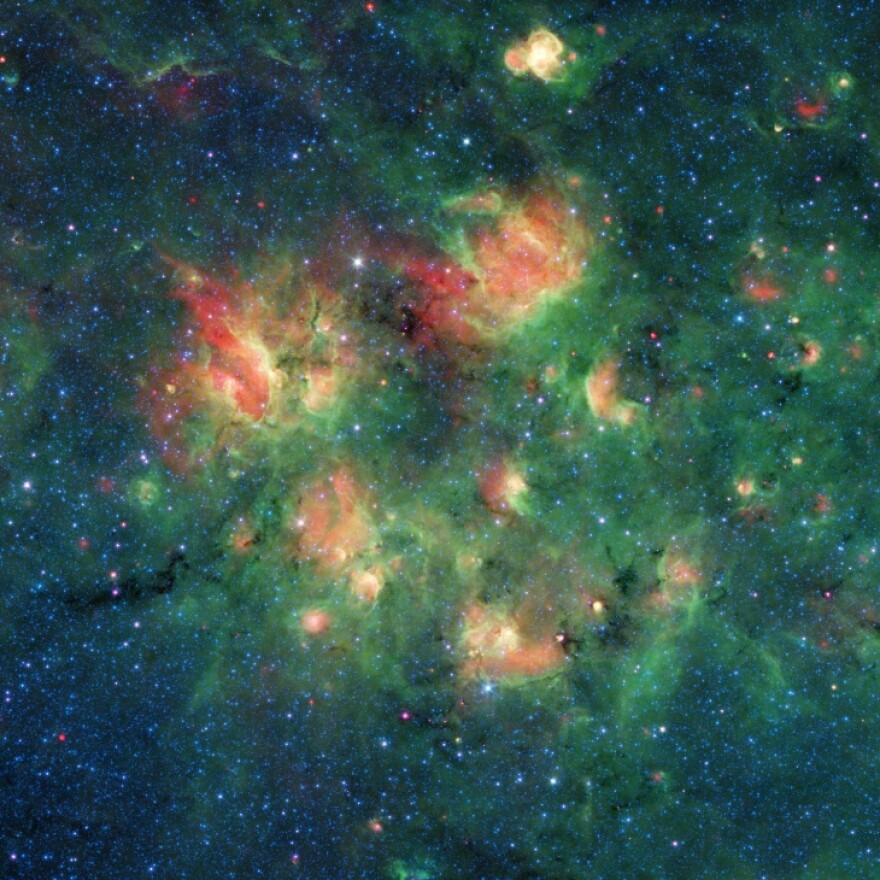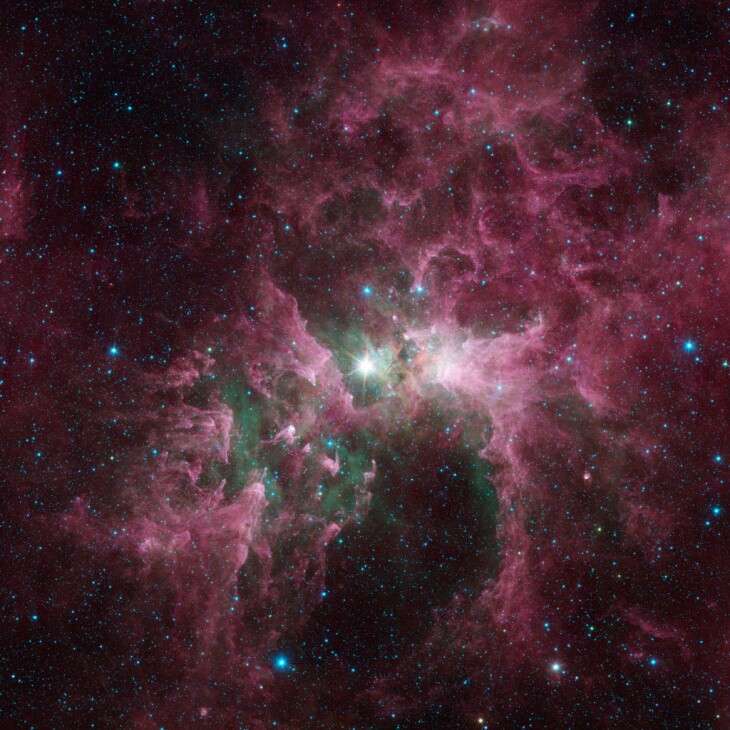Truth matters. Community matters. Your support makes both possible. LAist is one of the few places where news remains independent and free from political and corporate influence. Stand up for truth and for LAist. Make your year-end tax-deductible gift now.
NASA's Spitzer Telescope Revealed Colors Unseeable By The Human Eye. It Retires Next Week

Next week, the last of four NASA space-based observatories will retire. The Spitzer Space Telescope brought the universe into a new light (literally), revealing images of planets, solar systems, stars and more in infrared -- renderings that human eyes aren't able to see otherwise.
"Infrared light provides unique perspectives on the universe," said Michael Werner, a project scientist for Spitzer at the Jet Propulsion Laboratory in Pasadena. "In the infrared, we have some unique things we can do to augment our understanding."
To that end, Spitzer - which launched in 2003 - allowed scientists to see stars in distant galaxies, planets that might be too cool to produce much light, and parts of the universe that are otherwise blocked by small particles.
"We call these the old, the cold, and the dirty," said Werner.
The other space observatories in Spitzer's class include the Hubble Space Telescope, Compton Gamma-Ray Observatory and the Chandra X-Ray Observatory. In 2016, NASA announced that Spitzer and Hubble had identifiedGN-z11, the most distant galaxy scientists had observed to date.
Spitzer will retire on Jan. 30. Here are some of the images it has taken over the years. Live long and prosper, old friend.









Correction: A previous version of this story mispelled Michael Werner's name. LAist regrets the error.







